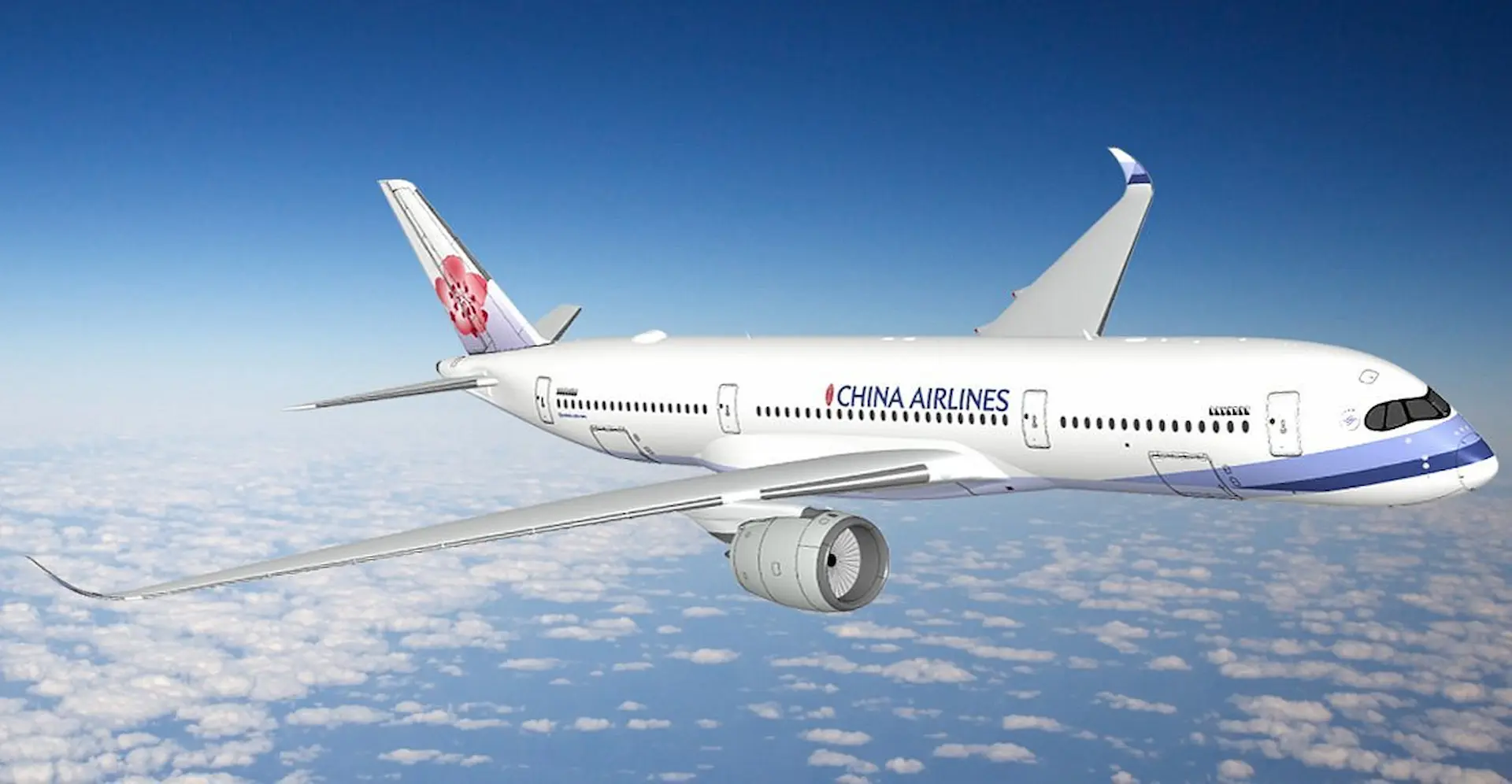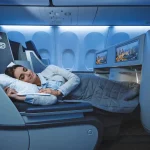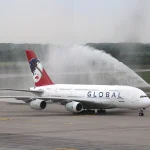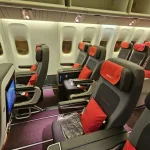After flying with China Airlines numerous times over the last decade, across short-haul Asia routes and long-haul transpacific legs, I’ve had enough experience to form a well-rounded, evidence-based opinion. In this review, I’ll break down every aspect that matters: from safety and punctuality to inflight comfort and service quality. I’ll also include hard data, industry certifications, and direct comparisons with rival carriers like EVA Air and Cathay Pacific.
Let’s answer the real question: Is China Airlines reliable enough to trust with your money, time, and peace of mind?
Is China Airlines a safe and certified airline?
Yes, China Airlines is a fully certified and internationally audited airline that meets global safety standards.
China Airlines holds IATA Operational Safety Audit (IOSA) certification, which is a benchmark for global safety compliance. They are also a member of the SkyTeam alliance, meaning they undergo regular audits and meet alliance-wide operational and safety benchmarks. According to the Aviation Safety Network, China Airlines has significantly improved its safety record since the 2000s.
The airline operates a modern fleet of 85 aircraft, including:
- Airbus A350-900
- Boeing 777-300ER
- Boeing 737-800
- Airbus A321neo
Most wide-body aircraft in its fleet are under 7 years old, placing China Airlines among Asia’s younger fleets.
Notable safety improvements:
- Last fatal accident was in 2002 (Flight 611), followed by comprehensive procedural overhauls.
- Full implementation of EFBs (Electronic Flight Bags) and predictive maintenance tools since 2019.
- No hull-loss incidents since 2002.
From a safety standpoint, I trust China Airlines on par with any tier-one East Asian carrier.
How reliable is China Airlines in terms of punctuality?
China Airlines’ on-time performance sits at a moderate 75.1%, based on data from Cirium in 2023.
This figure puts it slightly behind rivals like ANA (85.2%) and Singapore Airlines (83.9%), but ahead of some North American competitors like United or American Airlines. Punctuality varies depending on the route and time of year. Delays tend to be more common during the typhoon season in Taiwan (July–October) and at busy transit hubs like Taoyuan International Airport (TPE).
My experience matches the data:
- Short-haul Asia routes (e.g. Taipei to Tokyo, Seoul, Hong Kong): Generally on time.
- Long-haul routes (e.g. LAX, SFO, AMS): Prone to delays of 30–60 minutes during peak seasons.
- Ground services: Baggage delivery speed is average. My bags usually arrive within 20–25 minutes of landing.
Is it the most punctual? No. But is it consistently predictable? Yes, especially if you build in some buffer.
What is the in-flight experience on China Airlines?
China Airlines has invested heavily in improving inflight experience, particularly on its A350 and 777-300ER aircraft.
Seat comfort:
- Economy class: Seat pitch averages 32 inches, which is above global average. Recline is decent, and headrests are adjustable.
- Premium Economy: 39-inch pitch, 19-inch width, leg rest. Worth the upgrade on long-haul.
- Business class: Lie-flat seats in 1-2-1 reverse herringbone layout on A350s. Private and spacious.
Entertainment:
- Panasonic eX3 system on new aircraft, with 11 to 18-inch touchscreens depending on class.
- Content selection includes over 100 movies, music, TV shows, and real-time flight maps.
- Wi-Fi is available but limited to certain aircraft and not free. Prices range from $11.95/hour to $21.95/flight.
Cleanliness and ambiance:
I’ve consistently found cabins clean, even after 12+ hour flights. Cabin lighting mimics natural circadian rhythms, helping with jet lag. Noise levels are low, especially on the A350, thanks to quieter Rolls-Royce Trent engines.
How does China Airlines rank in service quality?
Cabin crew professionalism on China Airlines is consistently high, though not always emotionally warm.
Staff interactions:
- Polite, reserved, and highly efficient. Not as emotionally engaging as Thai Airways or Singapore Airlines.
- English proficiency is serviceable. On Japan and U.S. routes, at least one fluent English-speaking crew member is always available.
Food and beverages:
- Economy: Asian and Western options; main course + salad + dessert. Taste and portion sizes are solid for the class.
- Business class: Fine-dining style plating with options like braised pork rice, grilled salmon, or beef tenderloin. Wines are selected from French and Australian vineyards.
Service on long vs. short-haul:
- Short-haul flights (under 3 hours): Efficient, but limited meal variety.
- Long-haul (10+ hours): Full meal service, mid-flight snacks, attentive beverage rounds.
Service feels more systematic than heartfelt, but always professional and reliable.
What are the pros and cons of flying China Airlines?
Pros:
- New fleet with advanced aircraft (A350, A321neo)
- Well-priced transpacific fares, often 10–20% cheaper than EVA or ANA
- Great premium economy value, especially on U.S.–Taiwan routes
- Solid inflight product with reliable food and entertainment
Cons:
- Inconsistent punctuality at TPE and during high-season months
- Wi-Fi not available fleet-wide, and pricing is above average
- Limited Western language content on older aircraft entertainment systems
- Transit experience in Taipei can be hectic during peak hours
I always recommend booking direct flights where possible and avoiding tight layovers through TPE.
What do passenger reviews say about China Airlines?
Passenger feedback is generally positive but not glowing.
Aggregate review scores:
- Skytrax: 4.0/5 – Praised for cleanliness and comfort
- TripAdvisor: 3.8/5 – Service consistency noted
- Google Reviews: 4.2/5 – Higher satisfaction on long-haul
Common compliments:
- Comfortable and clean cabins
- Good legroom in economy
- Friendly, if reserved, crew
Common complaints:
- Inconsistent delays
- Limited inflight entertainment updates
- Non-transparent Wi-Fi availability
Forums like Flyertalk and Reddit echo these themes. Frequent flyers tend to trust China Airlines more than casual travelers do.
How does China Airlines compare to similar carriers?
Comparison with EVA Air:
- EVA wins on punctuality and soft service (friendlier crew)
- China Airlines wins on price and food variety
Comparison with Cathay Pacific:
- Cathay offers more luxurious lounges and business class service
- China Airlines offers better pricing and younger aircraft
Comparison with Singapore Airlines:
- SIA is superior in almost every category except price
- China Airlines is 20–30% cheaper, with competitive hard products
Key comparison data:
- Fleet Age: China Airlines ~7 years, EVA ~6 years, Cathay ~9 years, Singapore ~6 years
- On-time performance: China Airlines 75.1%, EVA 82.5%, Cathay 84.0%, SIA 83.9%
- Price (NYC–TPE): China Airlines ~$850, EVA ~$1050, Cathay ~$1150, SIA ~$1250
What is China Airlines’ route coverage and network strength?
China Airlines operates over 160 destinations in Asia, Europe, North America, and Oceania.
Key hubs:
- Taipei Taoyuan International Airport (TPE) is the main hub.
- Kaohsiung (KHH) and Songshan (TSA) serve regional routes.
Major international routes:
- North America: Los Angeles, San Francisco, Vancouver, New York, Ontario
- Europe: Amsterdam, Frankfurt, Vienna
- Oceania: Sydney, Brisbane, Auckland
- Asia: Tokyo, Seoul, Bangkok, Hong Kong, Singapore
Alliance and codeshares:
As a SkyTeam member, China Airlines codeshares with:
- Korean Air
- Delta Air Lines
- Vietnam Airlines
- China Eastern
This enables seamless connections to over 1,000 destinations.
Is China Airlines good value for money?
Yes, China Airlines consistently offers one of the best value-to-cost ratios for transpacific and intra-Asia travel.
Fare breakdown:
- Economy: Meals, 23kg baggage, entertainment included. Fares start at ~$850 round-trip from U.S. to Taiwan.
- Premium Economy: Starts at ~$1,200, includes priority boarding, larger seats.
- Business Class: Starts around ~$2,800 on long-haul routes.
No hidden fees except for Wi-Fi and alcohol on short-hauls.
Refund policies are clearly listed, and fare flexibility tiers are transparent, unlike low-cost competitors.
Who should choose China Airlines over competitors?
Ideal for:
- Budget-conscious long-haul travelers
- Asia-focused itineraries
- SkyTeam frequent flyers (Dynasty Flyer points transferable)
Not ideal for:
- Travelers needing ultra-premium luxury service
- Tight connection itineraries via Taipei
- Passengers requiring free onboard Wi-Fi
Expert tips:
- Book A350 routes whenever possible for best experience.
- Select row 40–48 in Economy on the 777 for quieter cabin sections.
- Download entertainment before boarding if flying on older 737s.
Final Verdict – Is China Airlines reliable or not?
China Airlines is a reliable, safety-certified, and competitively priced full-service airline with a solid inflight product. While it’s not the most punctual carrier and lacks some ultra-premium perks, it offers excellent value for most travelers. I trust it, especially on long-haul flights where the newer aircraft and consistent service really shine.
If your priority is affordability, modern cabins, and a decent service standard, China Airlines is a smart, dependable choice.





